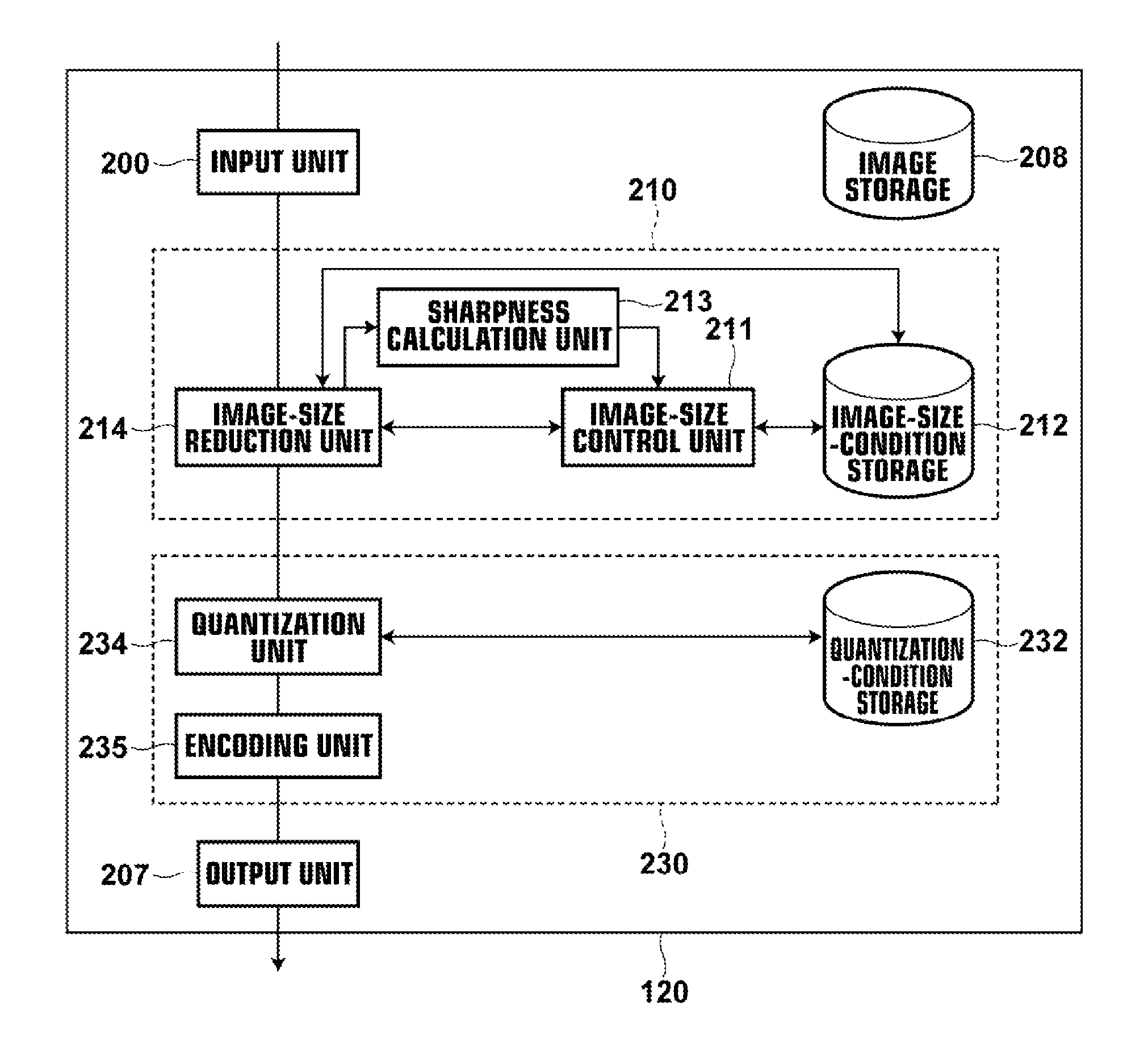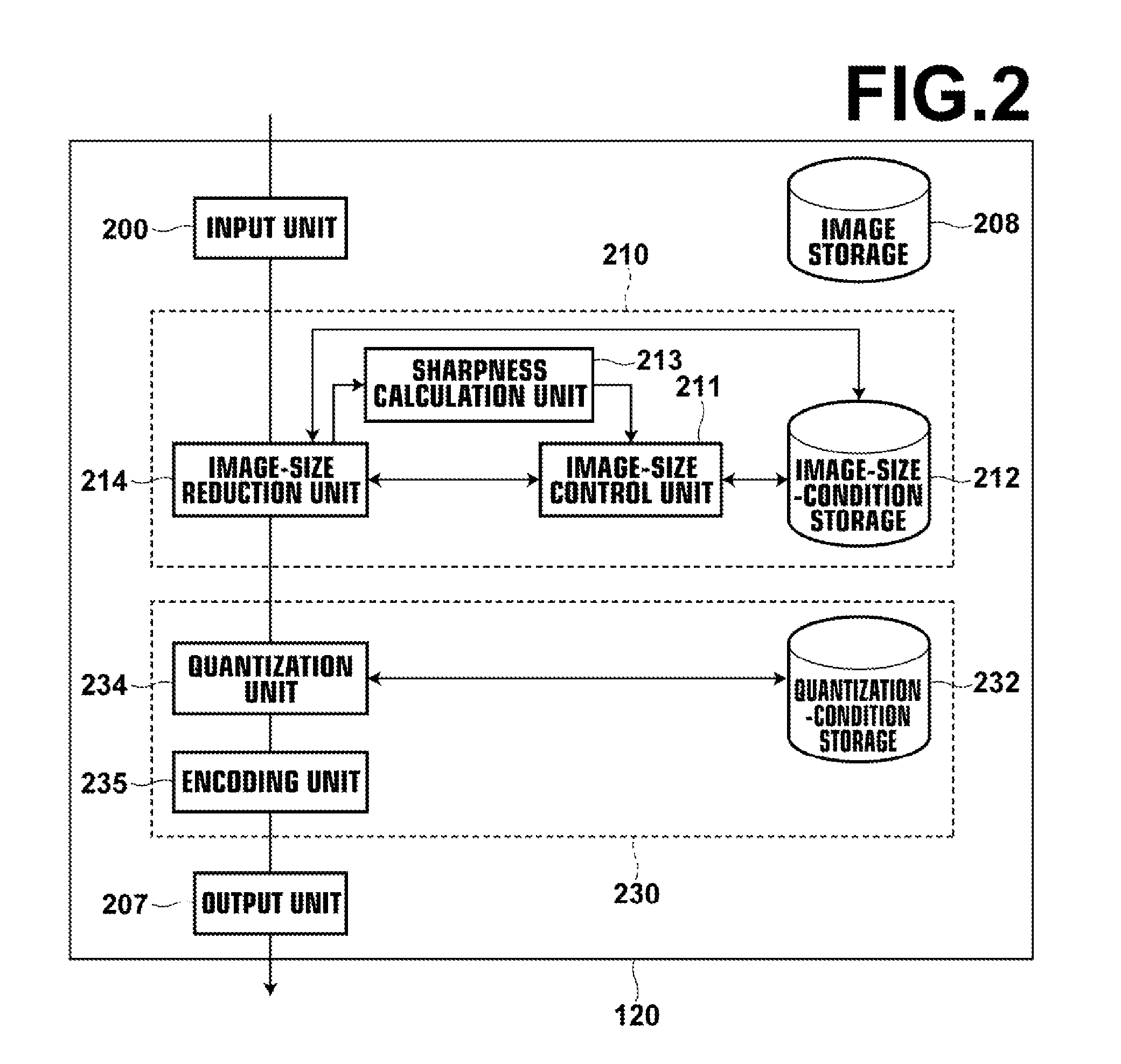Apparatus, process, and program for image encoding
a technology of image encoding and process, applied in the field of apparatus and a process for image encoding, can solve the problems of insufficient reduction of video data amount, inability to apply low-pass filtering to the region of interest, and large amount of data to be stored, so as to increase the calculation burden and high image compression
- Summary
- Abstract
- Description
- Claims
- Application Information
AI Technical Summary
Benefits of technology
Problems solved by technology
Method used
Image
Examples
first embodiment
1. First Embodiment
1.1 System Configuration
[0070]FIG. 1 is a diagram schematically illustrating an outline of a configuration of the image processing system 10 according to the first embodiment of the present invention. The image processing system 10 reduces the amount of data representing an image while maintaining the quality of the image of the object.
[0071]As illustrated in FIG. 1, the image processing system 10 comprises a plurality of image pickup devices 100a, 100b, and 100c (which may be hereinafter collectively referred to as the image pickup devices 100), a plurality of image encoding apparatuses 120a, 120b, and 120c (which may be hereinafter collectively referred to as the image encoding apparatuses 120), an image processing apparatus 170, a communication network 110, an image database (DB) 171, and a plurality of display devices 180a, 180b, and 180c (which may be hereinafter collectively referred to as the display devices 180). The image pickup devices 100 each pick up a...
second embodiment
2. Second Embodiment
2.1 Functions of Second Embodiment
[0125]FIG. 6 is a block diagram illustrating functions of an image encoding apparatus 120-2 according to the second embodiment, which can be used as one of the image encoding apparatuses 120a, 120b, and 120c in the configuration of the image processing system 10 illustrated in FIG. 1.
[0126]As illustrated in FIG. 6, the image encoding apparatus 120-2 comprises a region-of-interest detection unit 203 and a region-of-interest separation unit 204 in addition to the functions of the image encoding apparatus 120 according to the first embodiment. The region-of-interest detection unit 203 detects a plurality of regions of interest respectively receiving different degrees of interest from an inputted image or a reduced image of the inputted image (in which the image size is reduced). The region-of-interest separation unit 204 generates region-of-interest images respectively representing the plurality of regions of interest from the input...
third embodiment
3. Third Embodiment
[0148]FIG. 11 is a block diagram illustrating functions of an image encoding apparatus 120-3 according to the third embodiment, which can be used as one of the image encoding apparatuses 120a, 120b, and 120c in the configuration of the image processing system 10 illustrated in FIG. 1.
[0149]As illustrated in FIG. 11, the image encoding apparatus 120-3 comprises an interframe-compression processing unit 240. The interframe-compression processing unit 240 includes an interframe-compression-condition storage 242 and an interframe compression unit 241. The interframe-compression-condition storage 242 stores an interframe-compression condition, which is a condition for compressing each of portions (region-of-interest videos) of a video image respectively corresponding to a plurality of regions of interest along the time direction, where the video image is constituted by a plurality of (constituent) frames which are inputted into the image encoding apparatus 120-3. The i...
PUM
 Login to View More
Login to View More Abstract
Description
Claims
Application Information
 Login to View More
Login to View More - R&D
- Intellectual Property
- Life Sciences
- Materials
- Tech Scout
- Unparalleled Data Quality
- Higher Quality Content
- 60% Fewer Hallucinations
Browse by: Latest US Patents, China's latest patents, Technical Efficacy Thesaurus, Application Domain, Technology Topic, Popular Technical Reports.
© 2025 PatSnap. All rights reserved.Legal|Privacy policy|Modern Slavery Act Transparency Statement|Sitemap|About US| Contact US: help@patsnap.com



